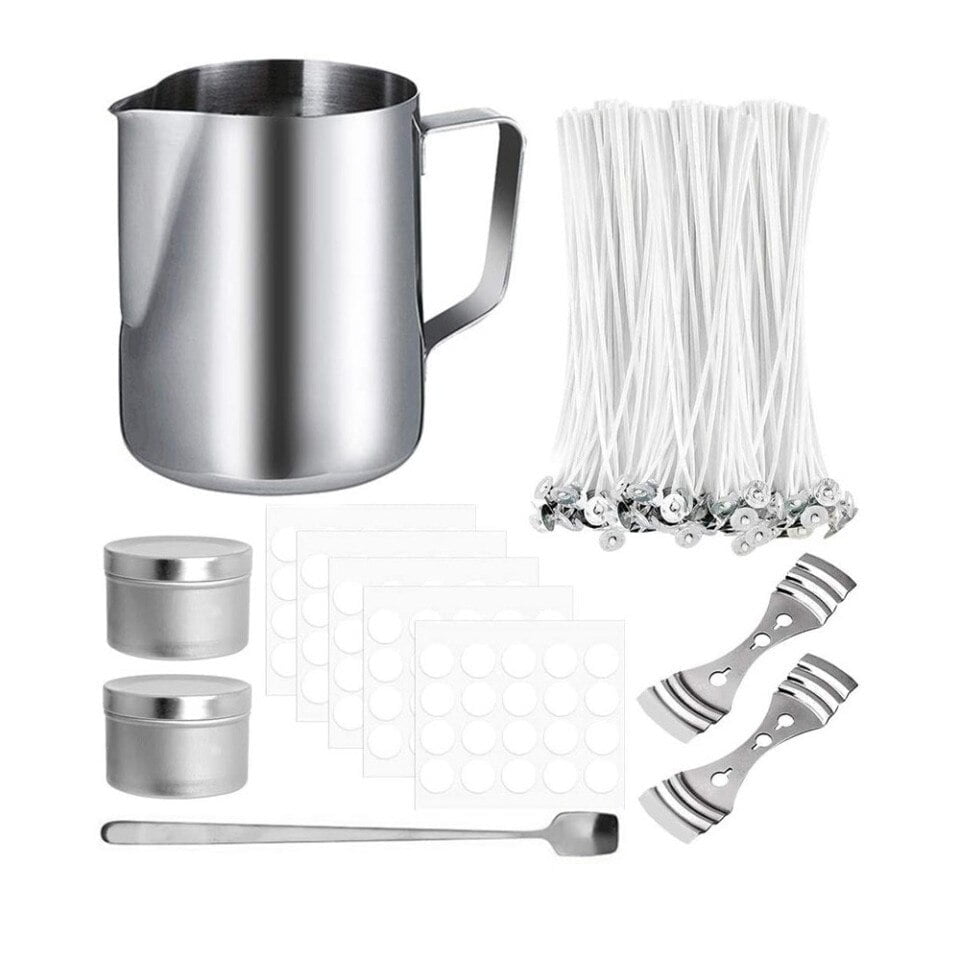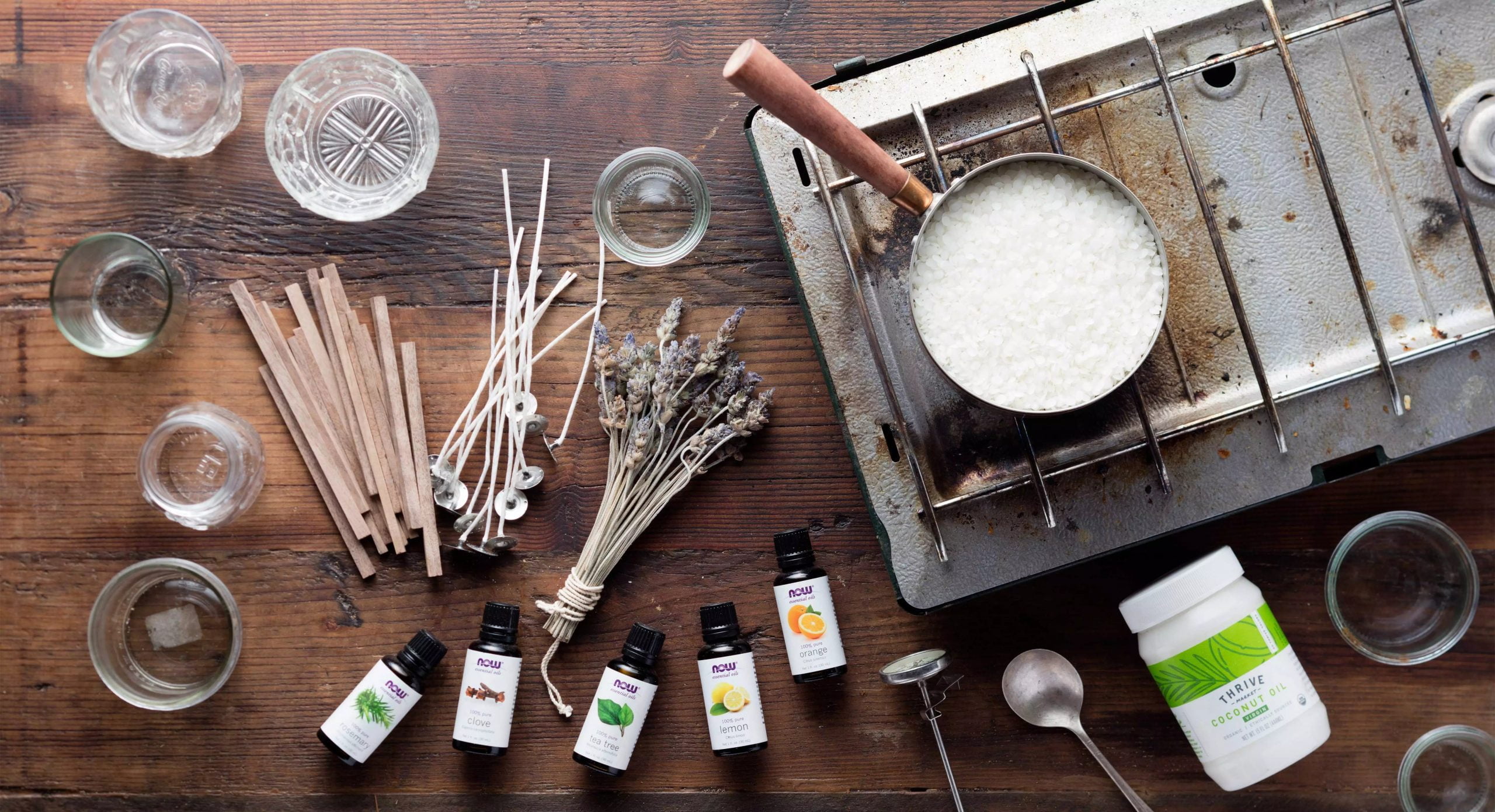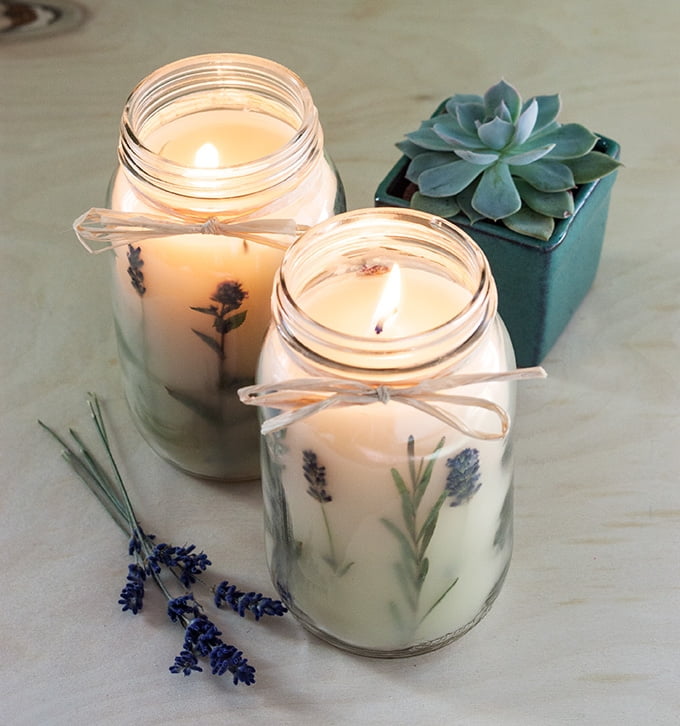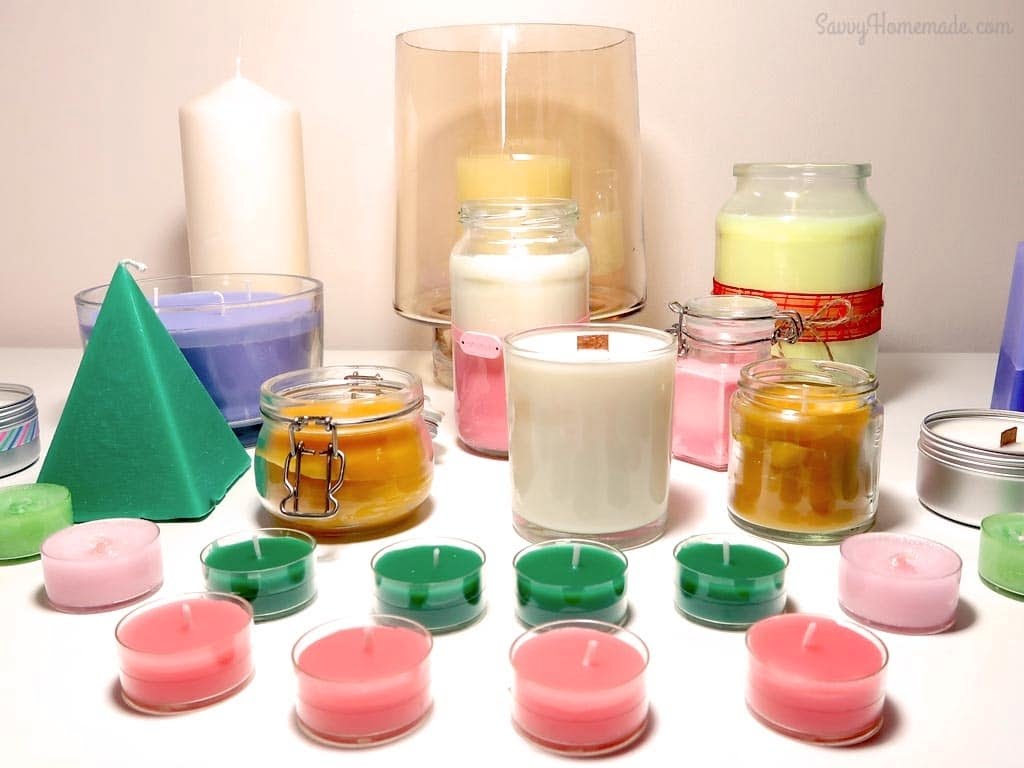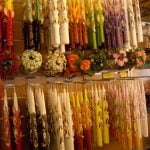Are you looking to start a new hobby that’s both creative and practical? If so, beginner candle making might be just the activity for you.
Whether you’re interested in making candles for personal use or to give as gifts, this article will provide you with all the information you need to get started on your candle making journey. From understanding different types of wax to choosing the right wicks and adding fragrances, we’ll cover everything a beginner candle maker needs to know.
Candle making is an ancient art that has been practiced for centuries, and it’s experiencing a resurgence in popularity today. Not only is it a fun and rewarding craft, but it also allows for endless creativity and customization. In this section, we’ll explore the basics of candle making and what you need to know as a beginner to create beautiful, handcrafted candles at home.
As we delve into the world of beginner candle making, we’ll discuss the different types of wax suitable for beginners, how to choose the right wicks for your projects, the importance of proper candle molds, adding scents with essential oils and fragrances, safety tips, troubleshooting common issues, and more. By the end of this article, you’ll have all the knowledge necessary to embark on your own candle making adventure. So let’s dive in.
Understanding the Different Types of Wax for Beginner Candle Making
When it comes to beginner candle making, one of the most important decisions you’ll need to make is what type of wax to use for your candles. There are several options available, each with its own unique properties and benefits. Understanding the different types of wax will help you choose the best option for your specific needs and preferences.
Paraffin Wax
One of the most popular choices for beginner candle making is paraffin wax. It’s affordable, easy to work with, and readily available at craft stores. Paraffin wax also has a high fragrance load capacity, meaning it can hold a lot of scent, making it great for scented candles.
Soy Wax
Soy wax is a natural alternative to paraffin wax and is derived from soybean oil. It has a lower melting point than paraffin wax, which allows for longer burning times. Additionally, soy wax is biodegradable and easy to clean up with soap and water, making it an environmentally friendly choice for beginner candle makers.
Beeswax
Beeswax is another natural option that beginner candle makers may want to consider. It has a naturally sweet scent and a beautiful golden color. Beeswax is known for its long burn time and air purifying properties, making it ideal for creating clean-burning candles.
By understanding the different types of wax available for beginner candle making, you can make an informed decision about which type will work best for your specific candle making project. Whether you choose paraffin, soy, beeswax, or another option altogether, the type of wax you select will significantly impact the quality and characteristics of your homemade candles.
Choosing the Right Wicks for Your Beginner Candle Making Project
When it comes to beginner candle making, choosing the right wicks is an essential step in ensuring the success of your project. Wicks are responsible for carrying the melted wax up to the flame, so selecting the appropriate type is crucial for achieving a clean and even burn.
Types of Candle Wicks
There are several types of wicks available for beginner candle making, each with its own characteristics and purposes. Some common options include cotton wicks, wood wicks, and hemp wicks. Cotton wicks are popular for their clean burn, while wood wicks offer a crackling sound and unique aesthetic. Hemp wicks are known for their slow burn and minimal smoke output.
Choosing the Right Size
In addition to material, it’s important to consider the size of the wick when preparing for your beginner candle making project. The diameter of your container or mold will dictate the appropriate wick size to use. If the wick is too small, it won’t create a strong enough flame to melt the wax fully. On the other hand, if it’s too large, you’ll end up with excessive soot and potentially dangerous conditions.
Considering Your Wax Type
The type of wax you choose can also impact your choice of wick. Different types of wax (such as soy wax or paraffin wax) have unique burning characteristics that may require specific wick sizes or materials. It’s important to research and experiment with different combinations to find the best fit for your beginner candle making project. For example, soy wax often requires a larger wick compared to paraffin wax due to its lower melting point.
By carefully considering these factors and experimenting with different options, you can ensure that you choose the right wicks for your beginner candle making project, setting yourself up for success in creating beautiful and functional candles.
Essential Oils and Fragrances
Adding fragrance to your beginner candle making project is a great way to enhance the ambiance of your space. There are many options for adding scent to your candles, including essential oils, fragrance oils, and even natural ingredients like dried herbs or spices. Here are some tips for choosing the right scents and incorporating them into your candles:
1. Essential Oils: Essential oils are derived from plants and offer natural scents that can provide aromatherapy benefits as well. Some popular choices for beginner candle making include lavender, eucalyptus, and citrus oils. When using essential oils in your candles, it’s important to follow recommended guidelines for safe usage and proper dilution.
2. Fragrance Oils: If you’re looking for a wider variety of scents to choose from, fragrance oils may be the way to go. These synthetic scents are specifically formulated for use in candle making and come in a wide range of options such as floral, fruity, and bakery-inspired fragrances. Be sure to purchase high-quality fragrance oils that are specifically labeled for use in candle making.
3. Natural Additions: For a unique twist on your beginner candle making project, consider adding natural ingredients like dried lavender buds, cinnamon sticks, or citrus peels to your candles. These additions can not only add interesting visual elements but also release subtle scents as the candle burns.
When incorporating fragrance into your candles, it’s important to consider how the scent will interact with the wax and wick you’ve chosen. Additionally, some fragrances may affect the burning characteristics of the candle, so be sure to test small batches before committing to larger production runs.
The Importance of Proper Candle Molds for Beginners
When it comes to beginner candle making, choosing the right candle mold is essential for creating beautiful and functional candles. Candle molds come in a variety of shapes and sizes, allowing beginners to get creative with their designs. Whether you prefer classic pillar candles, elegant taper candles, or fun novelty shapes, there is a candle mold out there to suit your vision.
One of the most common types of candle molds for beginner candle making is the metal mold. These durable and affordable molds come in different diameters and heights, making them suitable for various candle sizes. Silicone molds are also popular among beginners because they are flexible and easy to remove the finished candles from. Additionally, plastic molds are another option for those just starting out in candle making.
It’s important for beginners to consider the type of wax they plan to use when selecting candle molds. Some molds are specifically designed for paraffin wax, while others work best with soy wax or beeswax. Understanding the properties of different waxes will help beginners choose the right molds for their projects.
| Candle Mold Type | Features |
|---|---|
| Metal Mold | Durable and affordable, suitable for various sizes. |
| Silicone Mold | Flexible and easy to remove finished candles from. |
| Plastic Mold | Another option for beginner candle makers. |
Step-by-Step Guide to Beginner Candle Making
Now that you have gathered all your supplies and are ready to start making your first batch of homemade candles, let’s walk through the step-by-step process of beginner candle making. The first step is to melt your wax, which serves as the base of your candles.
There are different types of wax available for candle making, such as paraffin, soy, and beeswax. Each type has its own melting point and characteristics, so it’s important to choose the one that best suits your needs.
Once you have chosen your wax, it’s time to melt it using a double boiler or a dedicated wax melter. Avoid direct heat to prevent the risk of fire. As the wax melts, take care not to overheat it, as this can affect the quality and scent throw of your candles. Keep a thermometer handy to monitor the temperature and ensure it stays within the recommended range for your chosen wax type.
After melting the wax, it’s time to add any desired colorants or dyes to achieve the perfect hue for your candles. Stir thoroughly to distribute the color evenly throughout the melted wax. Once you’re happy with the color, it’s time to add fragrance oils if you want scented candles.
Be sure to follow recommended usage rates for fragrance oils based on the amount of wax being used in order to achieve a well-scented candle without overpowering aroma or compromising burn quality. Finally, carefully pour the melted and scented wax into your prepared candle molds and insert wicks into each candle jar or mold before allowing them to cool and set. With practice and patience, you’ll soon be creating beautiful homemade candles in no time.
Safety Tips for Beginner Candle Makers
When embarking on your journey into beginner candle making, it’s essential to prioritize safety throughout the entire process. Working with hot wax and open flames requires caution and attention to detail to prevent accidents. Here are some crucial safety tips to keep in mind as you start your candle making adventure.
First and foremost, always work in a well-ventilated area. Whether you’re melting wax or adding fragrances, proper ventilation is key to avoiding the inhalation of potentially harmful fumes. Additionally, keep a fire extinguisher within easy reach at all times, just in case of an unexpected flare-up.
Another important aspect of candle making safety is protecting yourself from potential burns. Always wear heat-resistant gloves when handling hot wax or containers. It’s also wise to invest in a quality apron to shield your clothing from any spills or splatters.
Lastly, never leave melting wax unattended, as it can quickly reach dangerous temperatures. Always stay present and attentive while working with heat sources to prevent accidents. By prioritizing safety measures like these, you can enjoy the art of candle making without compromising your well-being.
Remember that these safety tips are just as crucial for experienced candle makers as they are for beginners. Adhering to these guidelines will not only protect your own safety but also ensure the success of your beginner candle making projects.
Troubleshooting Common Issues in Beginner Candle Making
As a beginner candle maker, it’s common to run into some issues when starting out. But don’t worry, with the right tips and tricks, you can troubleshoot these common problems and achieve success in your candle making project.
One of the most common issues that beginners face is getting the right temperature when melting wax. If the wax is too hot, it can affect the fragrance and color of your candle.
To avoid this, it’s important to use a thermometer to monitor the wax temperature and ensure it stays within the recommended range for the type of wax you’re using. Additionally, a double boiler or dedicated wax melter can help maintain a consistent temperature for optimal results.
Another issue that beginners often encounter is air bubbles forming in their candles. These unsightly bubbles can detract from the overall appearance of your finished product. To prevent this, try preheating your containers before pouring the wax and tapping them gently on a hard surface after pouring to release any trapped air. You can also use a heat gun to carefully remove any remaining bubbles on the surface of the candle.
Finally, uneven burning can be a common problem for beginner candle makers. This can be caused by using wicks that are too small for the diameter of your container or not properly centering the wick during the cooling process. To address this issue, make sure to choose the right wick size for your container and use a wick centering device to keep it in place while the wax sets.
By being aware of these common issues and implementing these troubleshooting tips, beginner candle makers can overcome obstacles and achieve success in their new hobby. Don’t be discouraged by initial setbacks – with practice and attention to detail, you’ll soon be creating beautiful, high-quality candles to enjoy or share with others.
Conclusion and Next Steps
In conclusion, candle making is a rewarding and creative hobby that offers beginners the chance to explore their artistic side while also creating beautiful and functional items for themselves and others. Whether you choose to make simple, unscented candles or experiment with different types of wax, fragrances, and molds, there are endless possibilities to explore in the world of candle making.
Now that you have learned the basics of beginner candle making, it’s time to take the next step in your new hobby. Consider experimenting with different types of wax and wicks to see how they affect the finished product.
You can also try out a variety of essential oils and fragrances to create unique scents that reflect your personal style. Additionally, don’t be afraid to get creative with your candle molds or experiment with different pouring techniques to add visual interest to your creations.
As you continue on your candle making journey, remember to prioritize safety and always follow best practices when working with hot wax and open flames. Be sure to keep learning and expanding your skills by seeking out new techniques, joining online communities or workshops for beginner candle makers, and sharing your creations with friends and family.
With time and practice, you’ll become more confident in your abilities as a candle maker and may even consider turning your hobby into a small business opportunity. The possibilities are truly endless when it comes to beginner candle making – so enjoy the process.

Welcome to my candle making blog! In this blog, I will be sharing my tips and tricks for making candles. I will also be sharing some of my favorite recipes.

